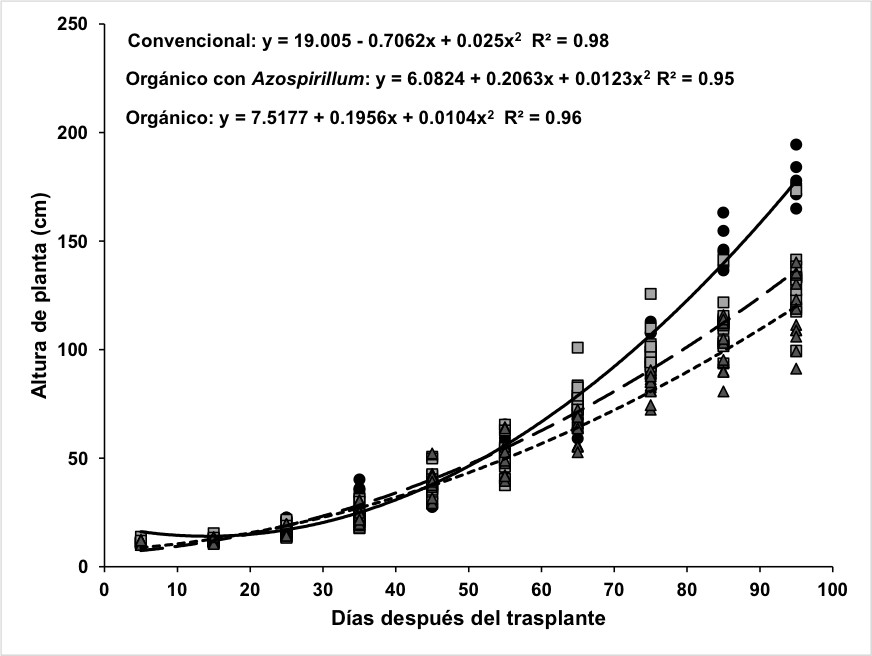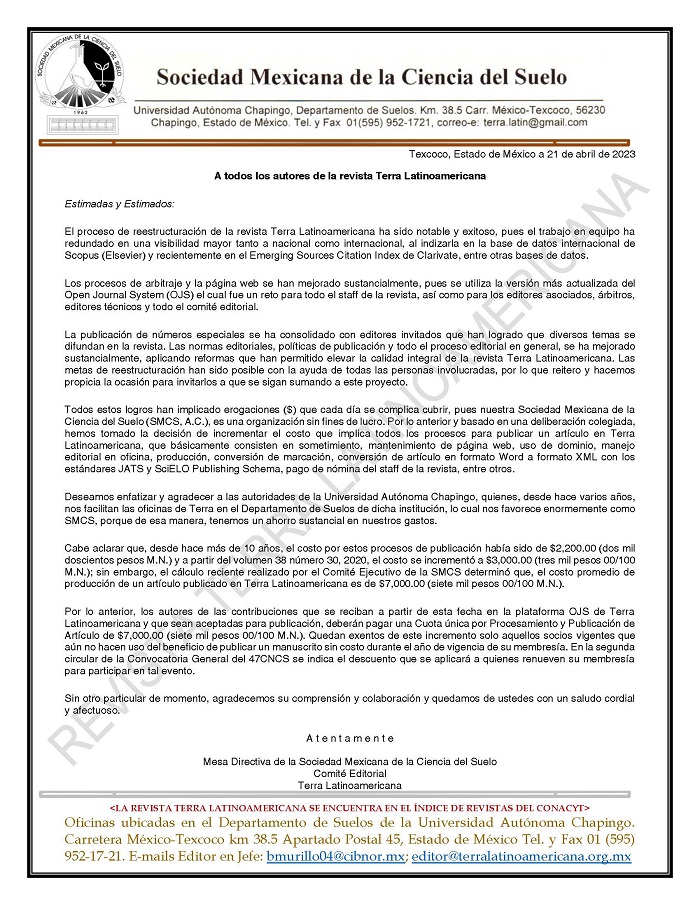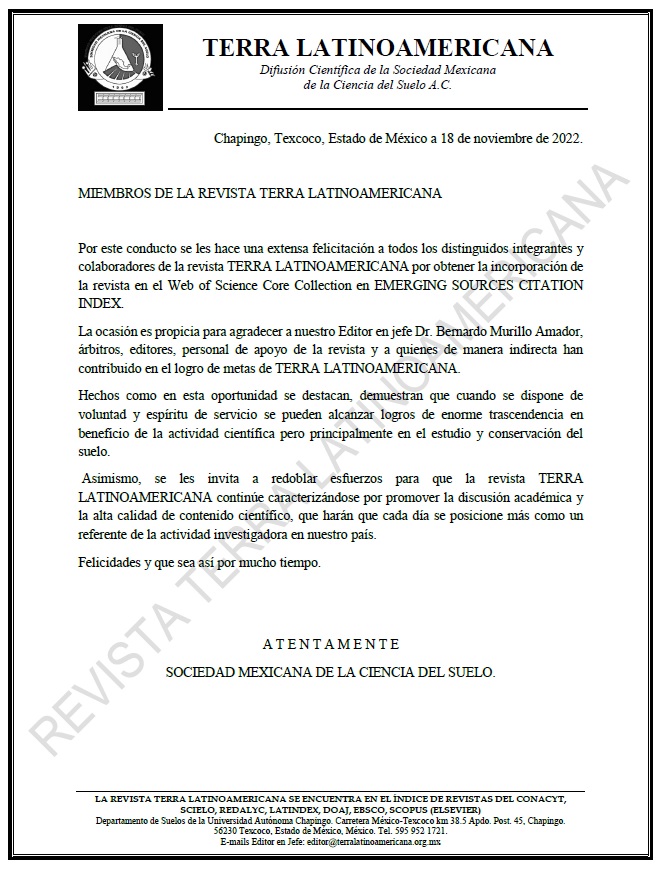Performance of Huacle chili (Capsicum annuum L.) with implementation of compost and Azospirillum sp. in greenhouse
DOI:
https://doi.org/10.28940/terra.v40i0.828Keywords:
sustainable agriculture, biofertilizers, compost, genotypes, rizo-bacteriaAbstract
Mexico is considered the center of origin of the chili pepper (Capsicum annuum L.), which has two groups: common chili peppers (available throughout the country) and local chili peppers. Our research was carried out with the purpose of knowing the performance of the black, red and yellow Huacle chili genotypes (local chilies from Cuicatlán, Oaxaca, two of them used to make the black mole), as well as evaluating their performance and quality under greenhouse conditions with two production systems: organic and inorganic, with addition and without addition of rizo-bacteria Azospirillum sp. The sowing was performed in trays with 200 cavities, using peat moss as substrate. The substrates used were: sand + compost at a) 20% and b) 35% doses, and for the control, c) 100% of sand. The pots were placed in a double row of plants in trefoil arrangement with a space of 30 cm between plants and 80 cm between aisles. The experimental design used was completely randomized blocks with two repetitions and an experimental unit of 8 pots per genotype. The following variables: plant height, number of leaves per plant, green and dry weight of the aerial part of the plant, green and dry weight of the root, and number of fruits per plant showed highest values in the conventional production system based on a substrate with 100% of sand and inorganic nutrient solution. Dry yield and fruit quality (polar diameter, cavity width and pulp thickness) were higher in the organic production system based on compost and additions of Azospirillum. According to these results, we conclude that among the Huacle chili genotypes, the black genotype, adapted favorably to the organic production system with doses of 20% of compost and additions of Azospirillum.
Downloads
Publication Facts
Reviewer profiles N/A
Author statements
- Academic society
- Terra Latinoamericana
- Publisher
- Mexican Society of Soil Science, C.A.

















